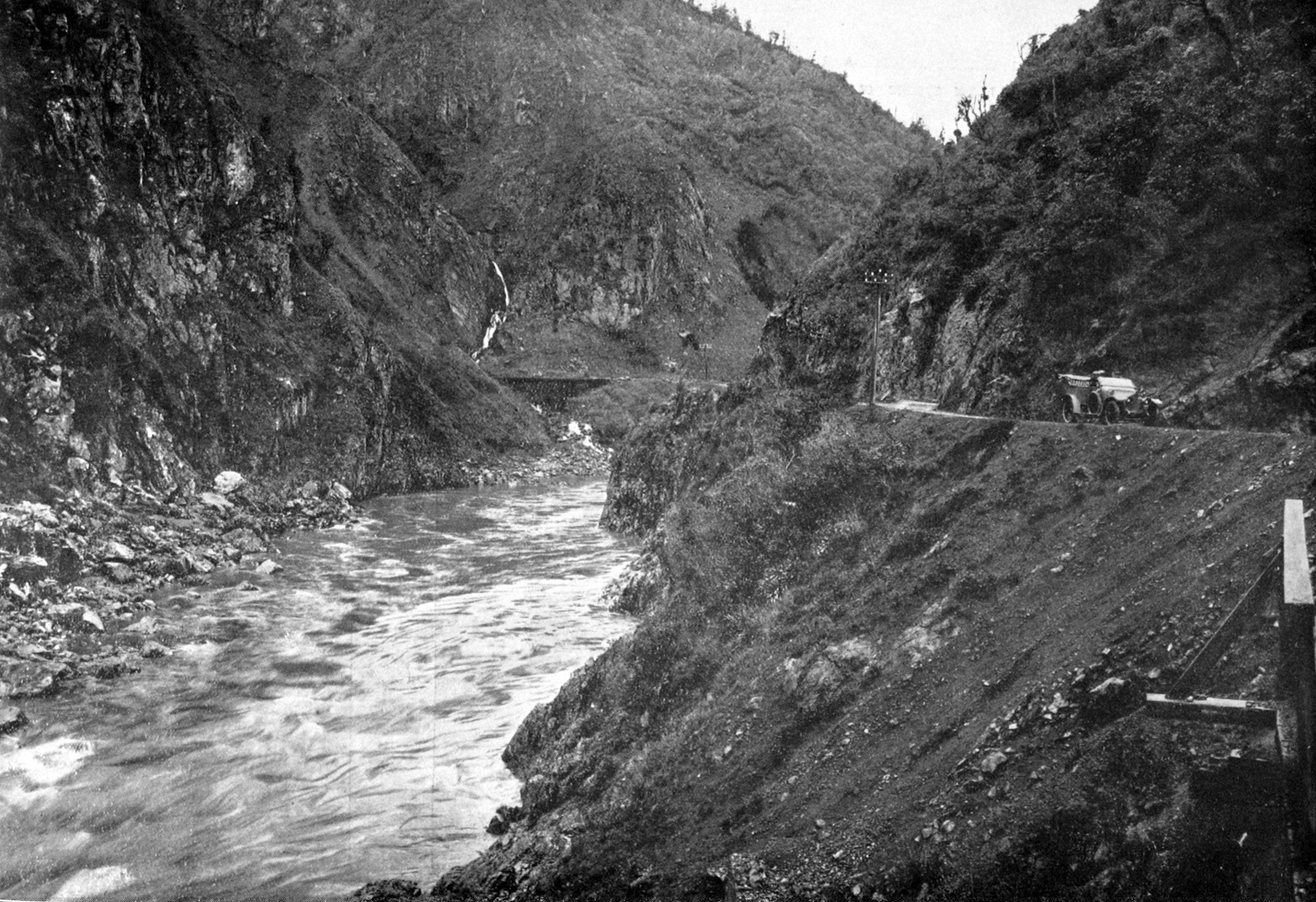
Where the hillside does not permit excavation, the outer edge is being built up by the sinking of huge columns of varying heights — some of the completed ones being 30 feet in height. These, with cross beams to a retaining wall which is in turn tied back to the solid rock, permit of the laying of a reinforced concrete roadbed of 11 inches. Along the outer edge is a concrete kerbing some 18 inches in height, which will be topped by a handrail. The roadway will be of a general width of 21 feet, and the spanning of the small gullies will tend to eradicate many of the bends which now characterise the road.

Tarzan would approve
Lianes give many New Zealand forests a tropical appearance. In some cases, these rope-like stems hang down from lofty supports and sometimes supply supports for other lianes, tangled masses forming forest walls that offer some difficulty to passage. This dominion has no fewer than 47 species of lianes a fuchsia, bush-lawyers, the supplejack and ratas. Early New Zealand botanists believed that the luxuriant growth of lianes in New Zealand was of tropical origin. Mr Bird’s studies show that that is not so. He states that the primary cause of the liane habit is not the great heat alone of a tropical rain-forest, but that it is that combined with great moisture in the atmosphere. He adds: "The moisture is great in this country and the climate here is equable without extreme heat or extreme cold. That condition is responsible for the high development of lianes in New Zealand."
Radio plans progress
A meeting of the Otago Radio Association was held last night at which the revised schedule of rules was adopted for registration purposes. Members were warned as to the necessity for exercising discrimination in the purchase of apparatus, and were invited to bring along their instruments for testing. The Association, which has a membership roll of about 200, has secured rooms in lower Moray Place, and has made arrangements for the erection of the aerial for its station between the city converter station building in Cumberland Street and the premises of Messrs John Chambers and Sons. Good progress is being made with the manufacture of the transmitting set, and it is anticipated that the association will be ready to begin broadcasting as soon as the valves come to hand. The Association will be working with up to 100 watts, and should be heard by crystal receiving sets up to a distance of 10 miles. By valve receivers the station should be heard anywhere in New Zealand.
Pounamu tool found
An interesting relic of Maori days has been unearthed by Mr Milne on his farm at Peebles in the shape of a large piece of greenstone, 13 inches long, 3 inches broad and 1 inch thick, and weighing about 5 pounds. Apparently it was being fashioned into the head of an adze-like tool. It was well shaped and an edge was being put on it. Those who speak with some authority say that it was most probably brought from the West Coast, as stone of its kind is unknown in the district.
— ODT, 26.9.1922












